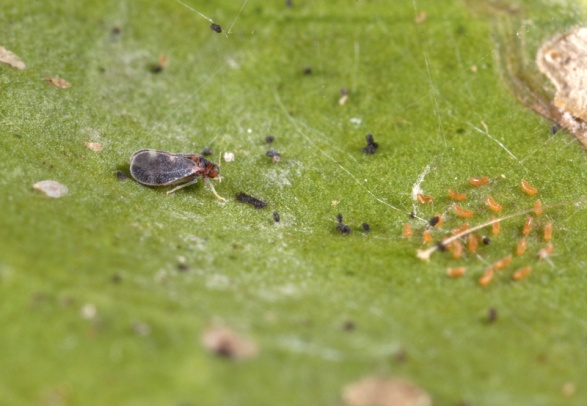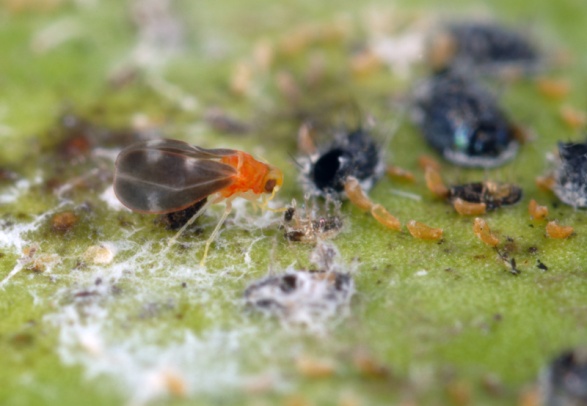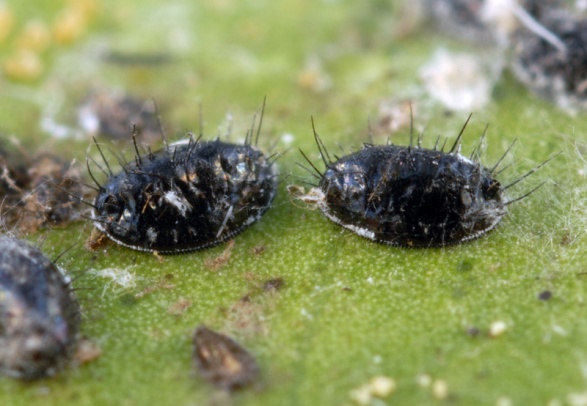
Citrus blackfly
Aleurocanthus woglumi Ashby
(Insecta: Hemiptera: Aleyrodidae)
The citrus blackfly, despite its name, is a whitefly species. Adults are slate blue owing to a fine waxy substance covering their bodies. Yellow, oval eggs are laid in spirals on the undersides of leaves. The tiny (0.3 mm) first instar nymphs are brown. Later instars turn darker, with prominent spines covering their bodies. Fourth instars are called pupae. They are shiny black with a waxy, white marginal fringe. At 1.3mm long, females are larger than males (1.0 mm long).
Depending on the temperature, the life cycle of Aleurocanthus woglumi takes between 45 and 133 days. Up to six generations may occur per year.
Originating from Asia, the citrus blackfly was first detected in Jamaica (1913), then Cuba (1916), then Mexico (1935). In South Florida, it was reported and eradicated in the 1930s and detected again in the 1970s.
The polyphagous citrus blackfly infests over 300 plant species, but citrus is the most suitable host. Honeydew excreted by feeding nymphs and adults facilitates the development of sooty molds that cover the citrus leaves and harm the plant.
Images
To
save the Web-optimized images shown below to your hard drive:
PC users: right click to "Save Picture (or Image) As..."
Mac users: click and drag to your desktop.

Young adult (left) and egg spiral (right) of citrus blackfly, Aleurocanthus woglumi Ashby
(Photographer: Lyle Buss, University of Florida)

Young adult citrus blackfly, Aleurocanthus woglumi Ashby
(Photographer: Lyle Buss, University of Florida)

Adult citrus blackfly, Aleurocanthus woglumi Ashby
(Photographer: Lyle Buss, University of Florida)

Pupae of citrus blackfly, Aleurocanthus woglumi Ashby
(Photographer: Lyle Buss, University of Florida)